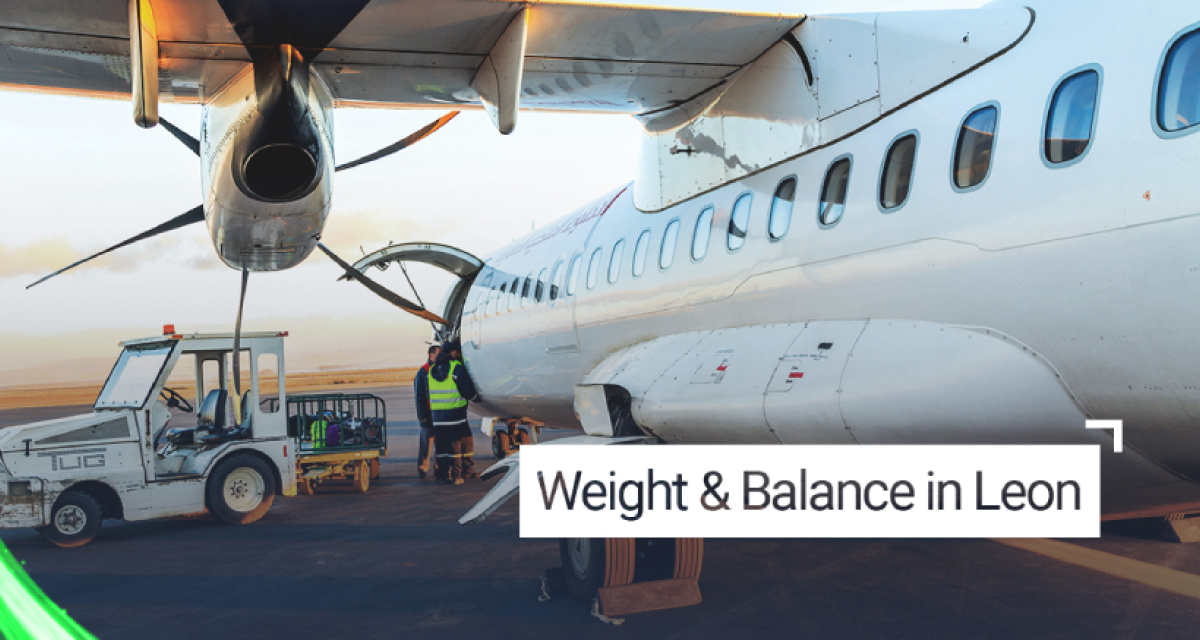Weight and balance your aircraft using Leon
Weight and balance your aircraft using Leon
Mass and balance calculations are an integral part of aircraft safety. By calculating the mass, weight distribution, and center of gravity of each aircraft, we can ensure the stability and maneuverability of the plane.
In Leon Software we change the usual ways to calculate the weight and balance by making it super simple and convenient. We made it almost fully automatic, instant and compliant with aircraft authorities guidelines. Although for an experienced pilot, filling out an aircraft balance sheet is nothing complicated or very time-consuming, Leon's functionality can be very useful for several reasons: in case of changes we can take a very quick look at different scenarios, the flight documents are generated automatically and then archived in the system.

How to get the weight and balance calculations right?
For a properly executed flight, two aircraft weights are essential: the takeoff weight and the landing weight. Both are limited and specified by the manufacturer of a particular model. The aircraft's weight is also extremely important for deciding whether to take off from or land at a given airport. If the aircraft is too heavy and the runway is too short, the plane may not be able to get into the air in a safe way. There can be a similar problem with braking in a safe manner.
It is not only a matter of total weight, it is also its distribution in sections of the aircraft. The plane's deck is divided into sections with a specific maximum load. This affects the shift of the center of gravity. Simplifying, for example, we need to place passengers at the front seats, and at the back will be the cargo - this way we're able to achieve balance.
Usual ways to calculate weight and balance
Due to aviation regulations there's a report made before each flight. It's based on the center of gravity limits, which are indicated in the airplane flight manual. The limits, shown as a graph, form a shape commonly known as an Weight and Balance Envelope. The center of gravity should be located within its boundaries. For a specific trip, we can calculate it by knowing the data as standard empty weight, fuel supply, the number of passengers or the weight of cargo.
Data needed to calculating the CG (center of gravity)
These are a number of values, some of which for a given aircraft will always be constant (e.g., the empty weight of the aircraft, dry operating weigh), and some of which will change with each flight (the number of passengers or total weight of usable fuel reserve).
We take into account variable values:
- the amount of fuel taken on the flight (also the fuel reserve, allowing, for example, to reach an alternate airport),
- the number of passengers, also factors affecting weight: their gender and age range (children, adults),
- cargo weight.
We also need to know some important weights:
- zero fuel weight,
- takeoff weight,
- landing weight,
- basic empty weight - aircraft weight, add crew and catering given weight - dry operating weight.
Each manufacturer specifies zero fuel weight of a plane. If we subtract dry operating weight from maximum zero fuel weight, we get maximum payload weight. But again, we have a limitation to the maximum takeoff weight, so with the maximum payload weight, we can exceed takeoff weight just by fuel load.
Weight of fuel also is crucial for having safe flight and achieving balance. Sometimes, due to exceeding a maximum landing weight, a plane can't land, so it flies around the airport to burn off fuel. Small planes often don't have the ability to dump unusable fuel, making it all the more important for them to calculate weight and balance correctly.
Everything matters: the arrangement of passengers, luggage – on some planes you can't put it into one baggage compartment without a counterweight in another. There are specific weight and balance limits for every aircraft type.
Last Minute Changes: a change in weight just before the plane is due to take off
There is such a thing as LMC, last minute changes. Each aircraft has margins for last-minute weight changes - an additional passenger will appear, additional cargo - there are certain weight and balance limits that allow not to create this sheet anew. In larger aircraft, such changes may be between 8 to 10 passengers, but in smaller planes - there’s not much room for a change and you can't close it with the LMC method. This is the reason why, especially in small aircraft, the new Leon module is extremely useful.
With the right software you can quickly check the aircraft weight or recalculate the center of gravity
In Leon Software we prepared templates according to W&B manuals provided by the aircraft manufacturers, where users input the data of a particular flight. This way we have the possibility to evaluate different scenarios for different parameters, such as the number of passengers, usable fuel or cargo weight. It is very helpful, because we can easily make some weight and balance computations, compare different situations and get instant information on how this will affect the balance of the aircraft.
Not yet a member of Leon community? Contact our Sales team to find out more or jump straight into the 30-day free trial.
TAGGED WITH



